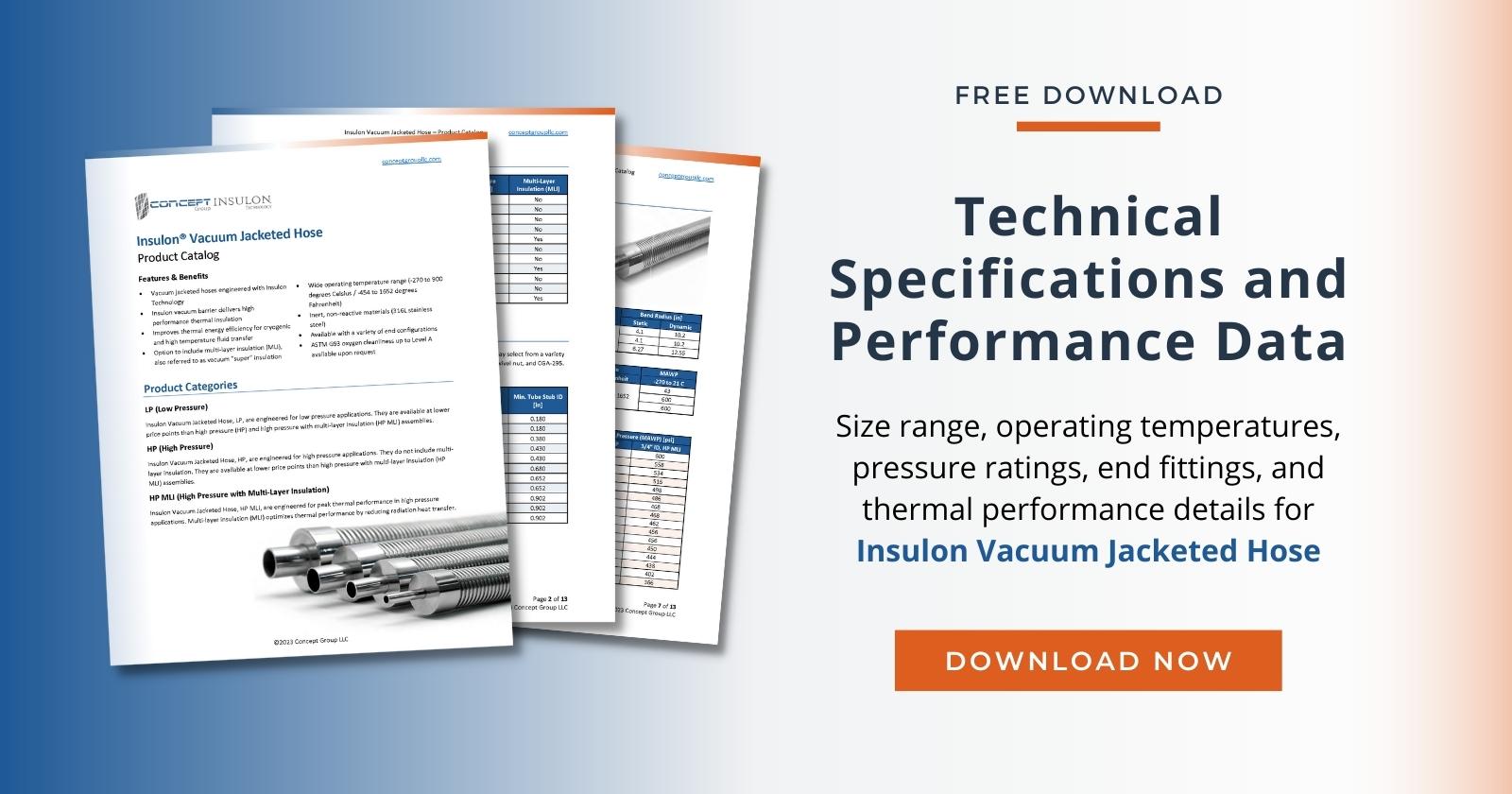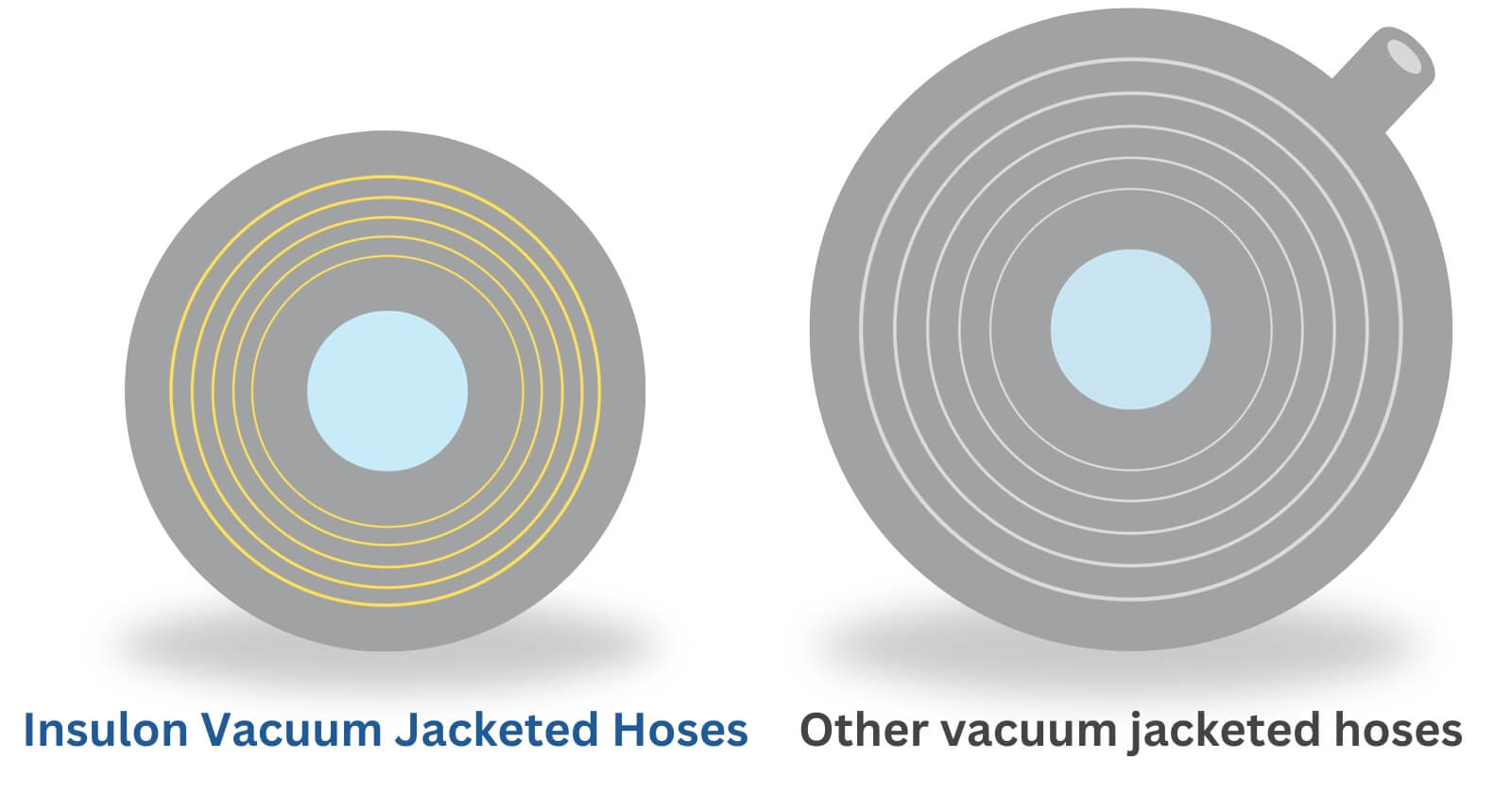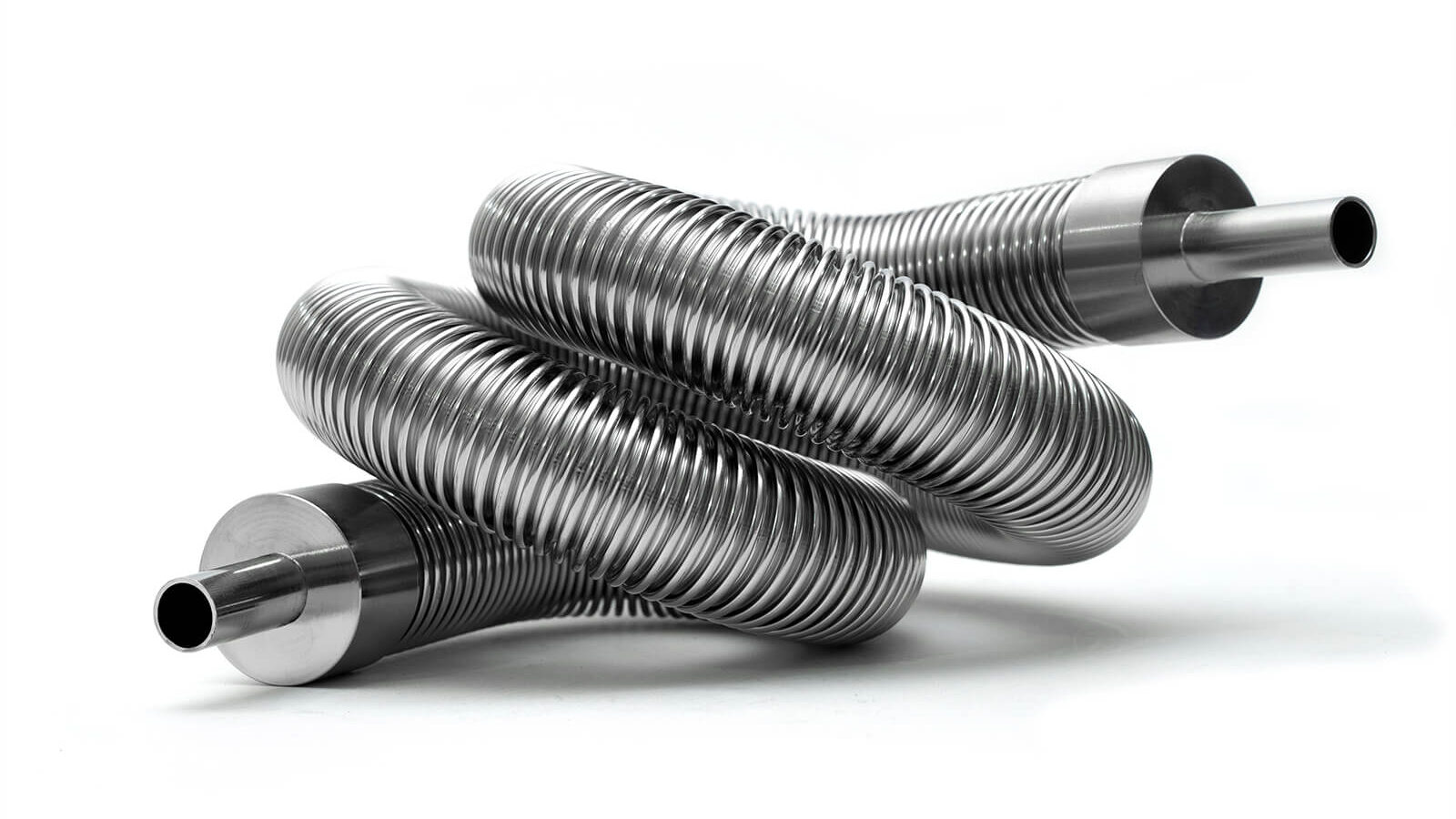Insulon vacuum jacketed hoses use proprietary technology to eliminate the need for pump-down maintenance. Keep reading to learn more about how Insulon hoses help achieve maximum productivity by delivering outstanding thermal insulation performance, minimizing downtime, and reducing expensive maintenance costs in your facility.
What are pump-downs?
Other vacuum jacketed hoses control the level of vacuum through a process called pump-downs. Vacuum pumps or “pump-out” devices are attached to a port on the hose, and this device draws out air until a substantial vacuum level is achieved. This vacuum barrier reduces convective heat transfer, enabling the double-walled hose to deliver thermal insulation. The vacuum level also impacts the performance of the multi-layer insulation that may be installed in the vacuum annulus — the deeper the vacuum, the more effectively the MLI will work as a radiation shield.
The problem with pump-downs
Over time, air molecules may slowly leak back into the vacuum space, either through the vacuum port itself or through a process called outgassing, in which molecules escape from solid materials. Other vacuum jacketed hoses install getters to attempt to collect these stray molecules, but getters can slowly lose effectiveness over time. As more molecules enter the vacuum space, they transfer increasing amounts of convective and conductive heat, and the insulating effect of the vacuum barrier diminishes. When this occurs, facilities that use vacuum jacketed hoses are forced to conduct pump-down maintenance to try to regain the lost vacuum levels. Pump-down maintenance can take many hours, consuming maintenance, repair, and operations resources while the facility suffers costly downtime.
Eliminating pump-downs to minimize downtime
Insulon vacuum jacketed hoses eliminate the need for pump-down maintenance, helping facilities to maximize productivity and minimize maintenance costs. The vacuum barrier in an Insulon hose is hyper-deep, resistant to outgassing, and has a more hermetic seal than other vacuum jacketed hoses. This hyper-deep vacuum space delivers reliable, ultra-high performance thermal insulation without the need for pump-down maintenance.
Resistance to thermal cycling
The proprietary technology in Insulon hoses helps prevent outgassing and allows the hoses to demonstrate outstanding resilience to thermal cycling. Insulon hoses require zero pump-down maintenance, even in high temperature applications. In addition to cryogenics, Insulon vacuum jacketed hoses insulate high temperature fluids with media temperatures up to 815 degrees Celsius (1500 degrees Fahrenheit).
Thermal cycling test with Insulon technology
Thermal cycling tests are conducted to measure a vacuum barrier’s ability to withstand cyclical temperature exposures. In this analysis, an Insulon component was exposed to 20,000 thermal cycles at 450°C. Consistent insulation performance demonstrates Insulon’s ability to maintain the integrity of the vacuum space. For this test, one heat cycle was defined as a 3-minute ramp up during which the component reaches steady-state, followed by a 2-minute cool-down period. Ambient temperature was 23°C.

A more hermetic vacuum seal
In other vacuum jacketed hoses, pump-out ports are necessary to control the vacuum level through the pump-down process. Ironically, these ports can actually be the source of leaks into the vacuum space. By eliminating this design feature, Insulon hoses offer a more hermetic package that prevents the ingress of molecules into the vacuum annulus.
Sleeker, more compact design
Excluding the pump-down port also complements Insulon hose’s compact design. With a smaller outer diameter and no pump-down ports, Insulon hoses consume less space in complex production environments. Compact packaging also makes Insulon hoses easier and quicker to install. Logistically, the smaller hoses consume less inventory space and reduce shipping weight.
Insulon vacuum jacketed hoses provide a range of benefits in thermal fluid insulation applications. In addition to zero pump-down maintenance, Insulon hoses deliver:
- More compact design; smaller outer diameter.
- Option to include proprietary, high-density multi-layer insulation (MLI).
- Lighter weight; improved ergonomics and flexibility.
- Resistance to thermal cycling, even at high temperatures (up to 900 C / 1500 F).
- Range of diameter and length options; Lengths up to 20 meters (66 feet).
- Range of pressure rating options.
Explore the articles below to learn more about Insulon vacuum jacketed hoses:

How much more compact are Insulon vacuum jacketed hoses?



